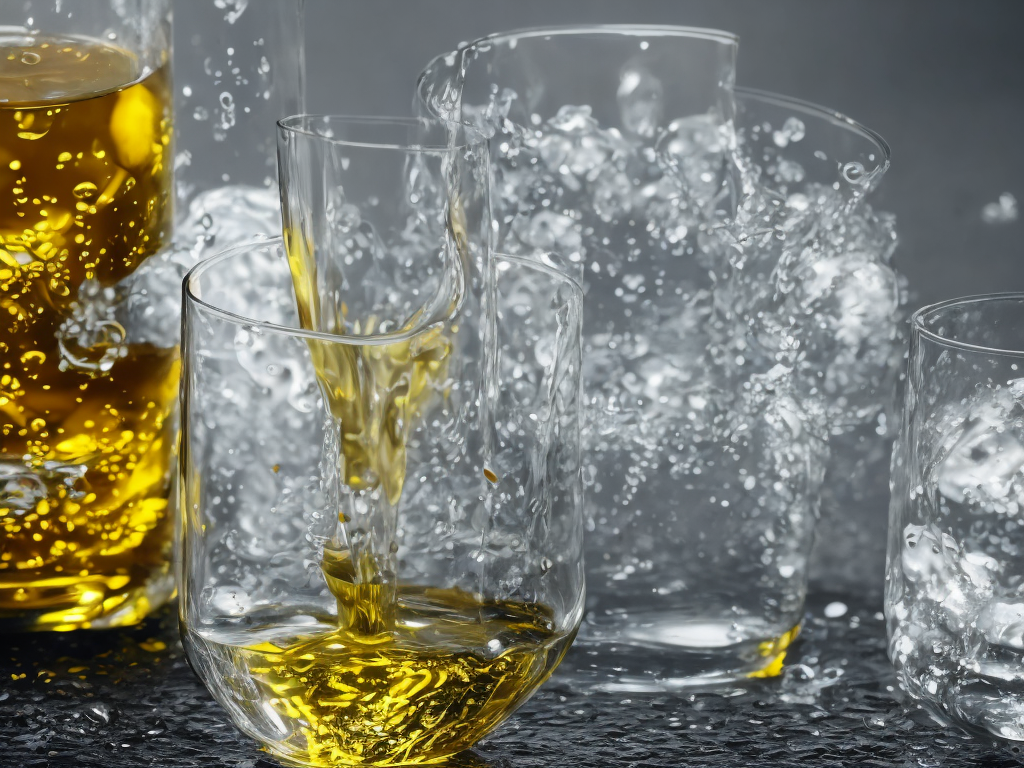
Fluid and liquid are both important terms used in physics, engineering, and chemistry. These two terms are often used interchangeably to describe substances that flow, but they are not exactly the same. In this article, we will explore the fundamental differences between fluid and liquid.
Definition of Fluid and Liquid
Fluid is a substance that can flow and has no fixed shape. In other words, fluid is any substance that can deform under the application of an external force. Fluids can be divided into two types: liquids and gases.
Liquid, on the other hand, is a form of matter that has a definite volume, but no definite shape. It takes the shape of the container in which it is placed. Liquids are one of the three classical states of matter, with the other two being solids and gases.
Differences Between Fluid and Liquid
The primary difference between fluid and liquid is that all liquids are fluids, but not all fluids are liquids. Here are some more differences between these two concepts:
1. Shape: Fluids have no fixed shape, while liquids have a fixed volume but no fixed shape. Liquids take the shape of the container in which they are placed. However, fluids can adopt any shape depending on the container in which they are placed.
2. Intermolecular Forces: Fluids include both gases and liquids, and intermolecular forces keep the particles of these fluids together. In liquids, these intermolecular forces are strong enough to maintain the particles in close proximity, making them less compressible than gases. In contrast, gases are highly compressible because the intermolecular force is too weak to maintain particles closer together.
3. Compressibility: Liquids are less compressible than gases. Their molecular arrangement, in which the particles are very close together, makes their spaces scarce to compress. Gases are highly compressible because the particles move freely, and the spaces in between them are larger, allowing them to be squeezed together.
4. Density: Liquids have a definite density, which means it takes up space and occupies a specific volume. In contrast, fluids can have varying densities. The density of a fluid depends on the temperature and pressure, but in general, can range from very low (such as air) to very high (such as mercury).
5. Viscosity: Liquids have a higher viscosity than gases. Viscosity is a measure of a fluid's resistance to flow. In liquids, molecules have a lower relative velocity, and the intermolecular forces between them result in a higher resistance to flow. Gases have a lower viscosity because the intermolecular forces between molecules are weaker.
6. Shear Stress: A shear stress is an external force that applies perpendicular to the surface of a material. While both fluids and liquids can experience shear stress, their behavior is different due to difference in viscosity. Liquids have a defined shape and structure, making it easier for fluid to apply shear stress to the particles within the liquid. In comparison, fluids experience a greater force of shear stress, which has the ability to easily change the shape of the fluid.
Uses of Fluids and Liquids
Both fluids and liquids have various applications in many industries. Fluids are used in industries such as aviation, automotive, and industrial engineering to transfer and control energy. Liquids also have numerous applications, including cooling systems, lubrication, cleaning, and hydraulic systems.
In aviation, fluids are used as hydraulic fluids to transfer energy from the aircraft's engine to various components of the aircraft that require movement. These fluids are essential for the proper functioning of the aircraft, and any malfunction of the hydraulic system can be catastrophic.
In the automotive industry, fluids are used to lubricate and cool the engine components. The engine oil operates at high temperatures and pressures, making it essential for the automotive engine to operate efficiently.
Liquids are also used in the hydraulic system to transmit power. This hydraulic system is used in equipment such as cranes, backhoes, and excavators. Liquids are also used to keep these machines cool and ensure that they are working efficiently.
Conclusion
In conclusion, fluid and liquid are two essential concepts in physics, engineering, and chemistry. A fluid is any substance that can deform under the application of external force, while a liquid is a state of matter in which the substance has a definite volume but no definite shape. While all liquids are fluids, not all fluids are liquids. The primary differences between these two are the arrangement of molecules and intermolecular forces. Liquids have strong intermolecular forces and a definite volume, while fluids include both liquids and gases and can take any shape depending on the container in which they are placed. Both fluids and liquids have numerous applications in various industries, including aviation, automotive, and industrial engineering.
 Self-Instruct
Self-Instruct